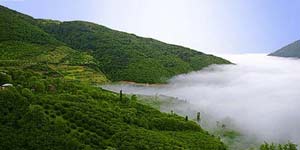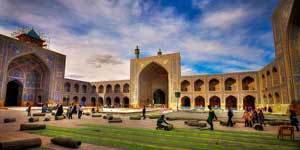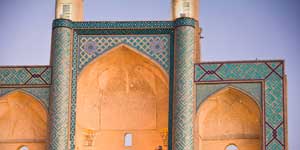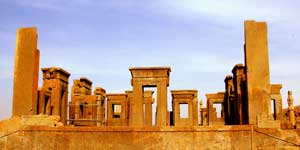🌿 Iran Jungle Tour – 6 Days / 5 Nights
Route: Tehran → Lahijan → Masal → Talesh → Asalem → Gorgan → Golestan National Park → Tehran
Season: Best from late April to early October
-
The Hyrcanian Forests are over 25 million years old and a UNESCO World Heritage Site.
-
Summer can be humid but offers the best access to highland villages like Subatan.
-
Some areas may have limited phone coverage—a plus if you're seeking digital detox.
-
Best to wear hiking shoes, bring insect repellent, and carry rain gear.
🌱 Day 1: Tehran → Lahijan – Gateway to the Green North
-
Drive from Tehran through the Alborz Mountains via the Qazvin-Rasht highway or the scenic Chalus road.
-
Arrive in Lahijan, a charming town in Gilan province, surrounded by tea plantations and forested hills.
-
Visit:
-
Iran’s first Tea Museum inside the tomb of Kashef al-Saltaneh, who brought tea cultivation to Iran.
-
Bam-e Sabz (Green Roof) for panoramic views over the city and forest.
-
Traditional Gilan bazaar for local silk, pickles, and sweets.
-
-
Overnight in a garden guesthouse or local ecolodge.
🌿 Tip: Try the famous Lahijan black tea and local “Kulucheh” (stuffed cookies).
🌲 Day 2: Lahijan → Masal – Forests Above the Clouds
-
Continue west to Masal, a highland town nestled in the Hyrcanian cloud forests.
-
Drive up to Olasbelangah village, where clouds often drift below your feet and forests stretch into the sky.
-
Walk forest paths lined with moss, ferns, and fog-draped trees.
-
Enjoy homemade meals with local villagers, who often open their wooden cabins to travelers.
-
Overnight in wooden huts or traditional eco-lodges.
🏞 Optional: Sunrise viewpoint hike above Olasbelangah for a sea-of-clouds experience.
🌳 Day 3: Masal → Talesh – Nomadic Life & Green Pastures
-
Drive through green valleys and pastures to Talesh, a region inhabited by the Talysh ethnic group.
-
If accessible (May to September), travel to Subatan summer pastures, famous for their untouched nature, wildflowers, and wooden huts.
-
Interact with semi-nomadic shepherds and try their fresh dairy products.
-
Horseback riding or light trekking available in the meadows.
-
Overnight in a local house in Talesh or in tents in Subatan (seasonal).
🐑 Cultural Note: Talysh people have their own dialect, traditional clothing, and a deep connection with the forest.
🌲 Day 4: Talesh → Asalem → Gorgan – Forest Road Adventure
-
Drive the spectacular Asalem–Khalkhal road, considered one of Iran’s most beautiful forest drives. Winding paths take you through ancient beech and hornbeam forests, often blanketed in mist.
-
Stop for short walks or photography at highland pastures and wooden tea huts along the way.
-
Reach Gorgan, capital of Golestan Province, known for its rich mix of Persian and Turkmen cultures.
-
Visit Nahar Khoran Forest Park, a popular urban forest with tall trees and local eateries.
-
Overnight in a boutique hotel or heritage house in Gorgan.
🐾 Day 5: Gorgan → Golestan National Park – Wildlife & Waterfalls
-
Depart early to Golestan National Park, Iran’s oldest and largest national park (UNESCO Biosphere Reserve).
-
Explore diverse landscapes—dense forest, open meadows, rivers, and rocky mountains.
-
Go on guided wildlife watching tours; the park is home to:
-
Persian leopards
-
Red deer and wild boars
-
Golden eagles and brown bears
-
-
Visit Kaboud-val Waterfall, the only all-moss waterfall in Iran.
-
Optional visit to Turkmen villages around Gonbad-e Kavus for cultural insight.
-
Return to Gorgan for dinner and overnight stay.
📸 Don’t forget your binoculars for wildlife spotting and camera for waterfall photography.
🏞 Day 6: Gorgan → Tehran – Return to the Capital
-
Optional morning stroll in Alangdareh Forest Park near Gorgan.
-
Return to Tehran via highway (6–7 hours) or by domestic flight from Gorgan Airport.
-
End of tour.
✅ Tour Features
-
Eco-lodging with local hosts and forest huts
-
Authentic northern Iranian cuisine (fresh fish, smoked rice, garlic herbs)
-
Tea tasting, cultural exchange with Talysh and Turkmen communities
-
Rainforest hiking and cloud-forest viewpoints
-
Opportunities for wildlife watching, photography, and traditional food making












 > Shiraz >
> Shiraz >  > Isfahan
> Isfahan












